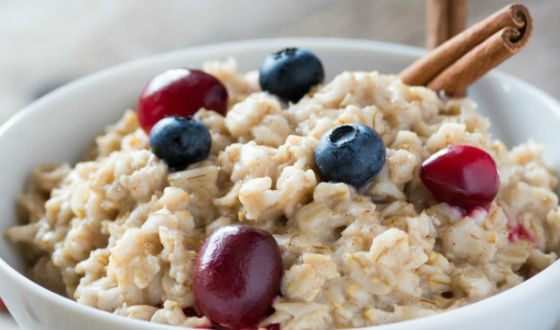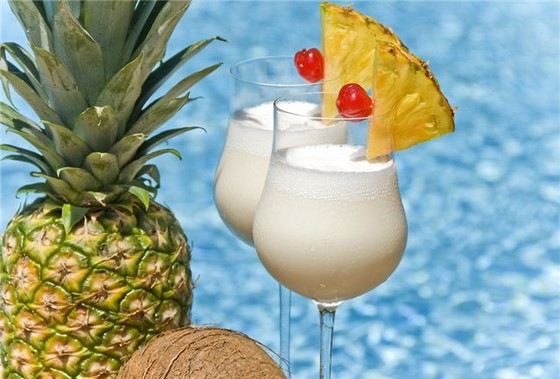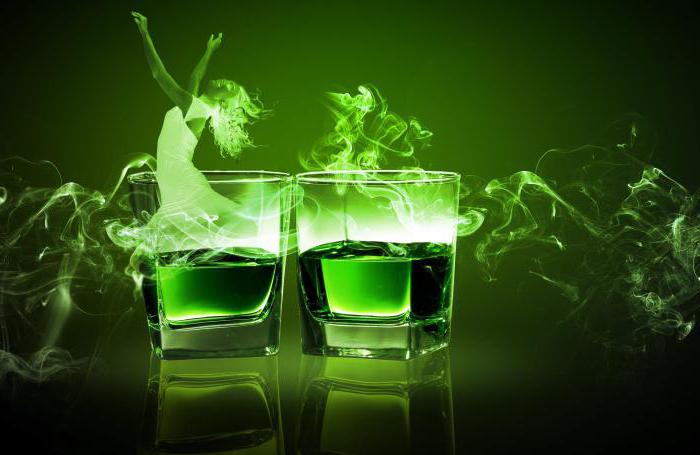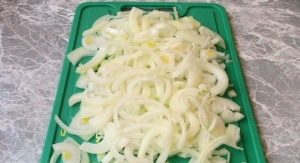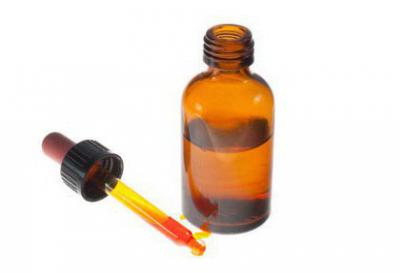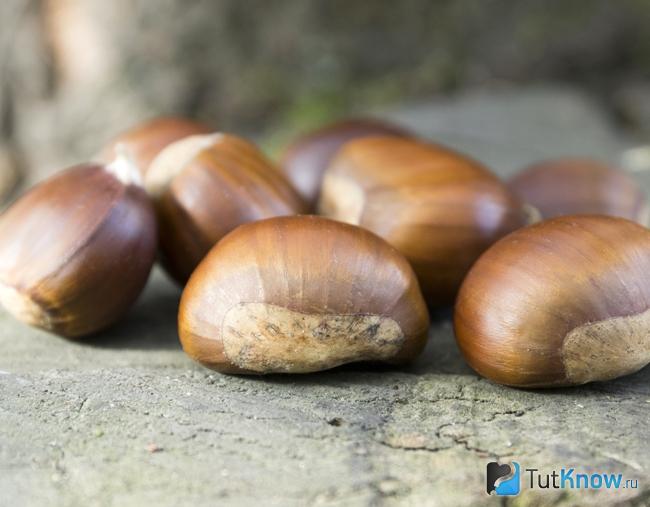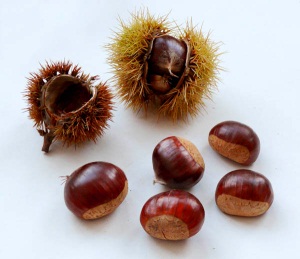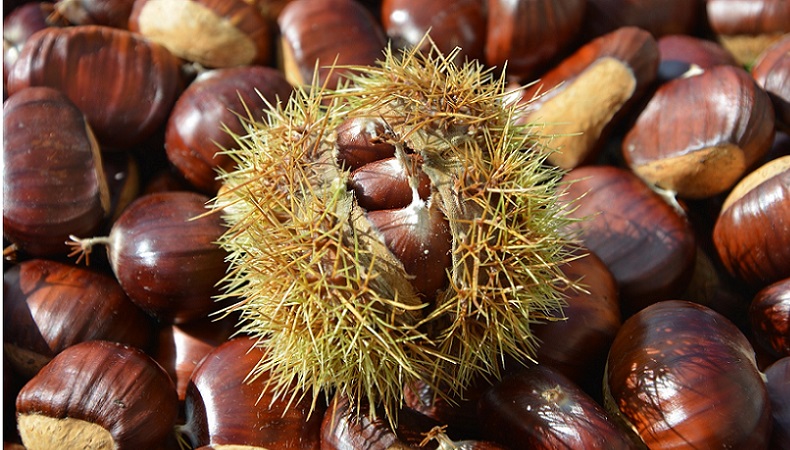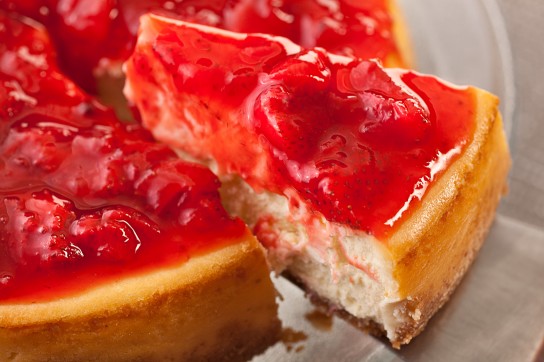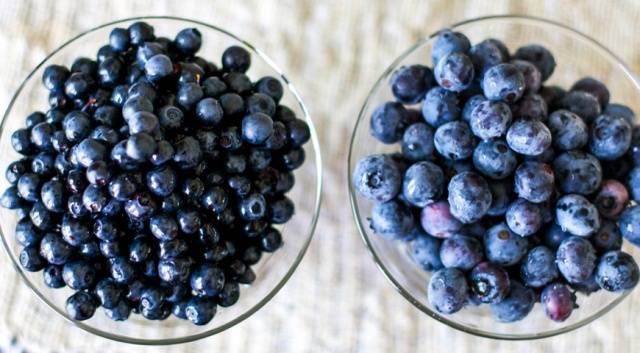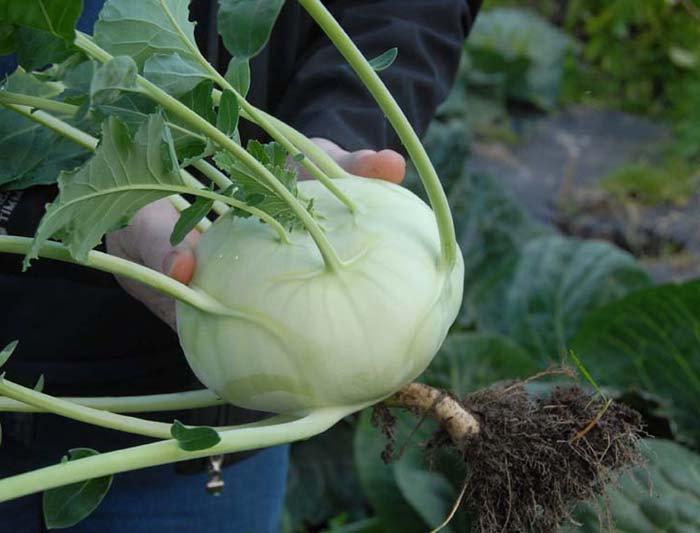The most expensive coffee in the world. The legendary Luwak coffee: a delicacy or a trick for tourists
Coffee has never been a cheap product. History remembers the times when coffee beans were worth its weight in gold. And this is not an exaggeration.
The Europeans, finding the "gold mine", began from the middle of the 18th century, actively planting plantations with coffee trees all over the world, where only climate allowed them to do this: in Colombia and Mexico, India and Indonesia.
Coffee became cheaper, but still brought enormous profits to those in whose hands were its production and marketing. You can read about how and where coffee is grown in the world.
Even today there are varieties available because of their high cost only to units. This is not about coffee as such, but about the exclusivity of certain types of raw materials, unusual methods for its preparation and processing, and the associated significant expenses.
A list of all types of coffee with names and their characteristics can be found in the article.
An overview of the most expensive tea in the world is available.
The most expensive litter in the world
Most people get the most expensive coffee grades in the world by exploiting “our smaller brothers”. And the best helpers are not even worth it.
The fact is that animals and birds are naturally endowed with amazing extrasensory perception, which tells them which fruits of coffee are the most ripe and delicious, and which are better to ignore.
Assistants in humans: lemur in Bali, monkeys in Indonesia, elephants in Thailand, bats in Costa Rica.
The most famous among these varieties is Indonesian coffee., which is called Kopi Luwak. The "partner" of a person in this case is the musang animal, or Malay palm marten, living in Southeast and South Asia.
Gourmets consider this type of coffee a drink of kings, although they know very well what it is made of - from excrement.
However, this is not entirely true. Of course, they make it from coffee beans, but only after they are eaten by a cute animal, will they travel along its digestive system and will again be outside to undergo the necessary “sanitation” in skilled human hands.
Coffee beans are the favorite food of musangs. They will never eat "greens", they will choose the ripe and most delicious fruits. They will be found on the tree and under it - at least a kilogram in one day.

Scientists have found that out of all this number of coffee beans, only 5 percent remain undigested, and they leave the animal's body intact.
However, being inside the animal, they manage to pass processing of gastric juice and odorous substance called "cibetin". Both that, and another goes to grains only for the benefit.
They are thoroughly washed, dried, fried. Manufacturers guarantee absolute purity and safety of the finished product, although the details of the processing of raw materials are kept secret.
Those who have tasted this coffee note a whole a bouquet of exquisite flavors - vanilla, dark chocolate and caramel.
The analogues of this drink, which are produced in Ethiopia, are estimated by tasters to be significantly inferior in quality and cannot be considered a worthy replacement for the Indonesian Kopi Luwak.
The famous coffee from Indonesia is an expensive pleasure. An average of 25-35 thousand rubles. worth one kilogram of fried grains.
Chon from Vietnam
 Chon coffee from Vietnam is produced in much the same way as the Indonesian Kopi Luwak. Asian palm martens eat coffee beans.
Chon coffee from Vietnam is produced in much the same way as the Indonesian Kopi Luwak. Asian palm martens eat coffee beans.
It is believed that, having been in the body of this animal, the grains acquire healing properties, so a cup of Chon coffee is not only tasty, but also useful.
The drink is surprising aromas of hot chocolate, cocoa, vanilla and caramel. It has a persistent, very pleasant aftertaste.
Interestingly, the Vietnamese way of making coffee is significantly different from the generally accepted one. He is never boiled in Turk.
Condensed milk is poured into the bottom of the cup, then a device called “fin” (metal filter) is installed. Ground grains are poured into it (the grinding should be large), pressed with a press and pour boiling water.
The drink is strong, saturated. There is also a summer recipe in which I use ice instead of condensed milk, and a tall transparent glass instead of a coffee mug. Great drink in hot climates.
The price of a variety of Chon per kilogram is 150-250 dollars. On the Internet, there are proposals to purchase a 500-gram package for 2700 rubles.
 This brand belongs to Thailand.. The technological process of preparing elite coffee includes ... feces of an elephant.
This brand belongs to Thailand.. The technological process of preparing elite coffee includes ... feces of an elephant.
If, upon learning about this, someone exclaims: “Yes, never in my life will I try coffee that remembers what elephant droppings are,” you have to agree with this.
Yeah never most people on the planet have not tried and will not try Black Ivory. And not because everyone is so squeamish.
The fact is that only 50 kilograms of these grains are sold per year, and they are sold only in a few cities in Thailand. A drop in the sea. To get a kilogram of the finished product, an elephant must eat 35 kg of the best coffee beans.
Being in the giant’s stomach, the “surviving” grains completely lose their bitterness, but are saturated with the aromas of all that he gladly ate — bananas and other tropical fruits, sugar cane.
Worth the elite Black Ivory - 75 thousand rubles. per kilogram fried beans.
Terra nera
 Terra Nera - the most expensive of the existing brands of coffee. The price per kilogram may exceed the amount of 20 thousand dollars.
Terra Nera - the most expensive of the existing brands of coffee. The price per kilogram may exceed the amount of 20 thousand dollars.
Moreover, in this case, the buyer overpays not only for exotic “excrement”, but also for chic packaging.
This type of coffee (which, incidentally, is produced even less than Black Ivory, only 45 kg per year) is sold in just one London store in a bag of silver paper, which reliably preserves the aroma of beans.
The packaging is protected from intrusion by a special valve and tied with a ribbon with a gold tag. If the buyer wants - his name is engraved on the tag.
Full-fledged participants in the coffee production process are palm civettes (the closest relatives of the Musangs) living in southeast Peru.
Classical arabica, having been in the stomach of these animals, acquires hazelnut and cocoa flavors and, according to experienced tasters, has a really great taste.
Other varieties of coffee from feces of animals and not only
 And briefly about some other expensive varieties. Coffee Bat (the name speaks for itself) is obtained in Costa Rica with the help of this animal.
And briefly about some other expensive varieties. Coffee Bat (the name speaks for itself) is obtained in Costa Rica with the help of this animal.
The animal cannot swallow whole coffee beans, but bite with sharp teeth and suck the juice - please! It turns out that the grains begin to dry directly on the tree. The work begun by bats is completed by the hot tropical sun.
People collect, process and prepare these grains of delicious coffee that costs 30 thousand rubles per kilogram.
Blue Mountain (translated Blue Mountain) get in Jamaica in the traditional way, without the participation of animals and birds. The quality of raw materials is influenced by a combination of various natural factors: the growth of coffee trees at high altitudes, the wind blowing from the sea, the special composition of the soil.
Tasters note in this coffee variety a harmonious combination of three tastes - bitterness, sweets and sourness. And this variety surprises with the aroma of fresh nectarines.

It is difficult to purchase Blue Mountain - 85 percent of coffee is sent to Japan, where this drink is very popular. The cost of a kilogram of grains is 27 thousand rubles.
Jacques bird in Brazil is involved in the creation of a variety of coffee called Jacques Bird. For a very long time in the south-east of the country, the bird was considered a pest and exterminated.
This continued until one local farmer at the end of the last century decided to use bird droppings in the same way as the excrement of some animals is used in other countries.
Coffee, obtained on the basis of such an unusual raw material, surprises with its taste notes: pineapple and coconut milk. A kilogram of grains is estimated at 28 thousand rubles.
 It is difficult to say which of the listed varieties of coffee tastes better and more than justifies the high price that is being asked for it.
It is difficult to say which of the listed varieties of coffee tastes better and more than justifies the high price that is being asked for it.
Few people manage to try all the exotic species. In addition, there is always a great danger of acquiring a fake.
If a person has the opportunity to visit different parts of the world as a tourist or on business, coffee must be tasted there necessarily - it most closely matches the characteristics of the variety and is much cheaper.
Hi my peppy readers! Do you like coffee? I’m really ... I can’t imagine the morning without an invigorating Americano or espresso. I don’t even remember when I started drinking it, but I’ll say for sure that at the university during breaks we already ran out with friends for another cup. Today there is such an abundance of coffee that even your eyes are sorted out, it can be purchased at every corner, in every store. But, alas, the numerous choices are not synonymous with quality, more and more often giving money, we do not get what we wanted. Alas, this is a fact. And you thought, what is the most expensive coffee in the world? From the litter!
All true coffee lovers, if they didn’t drink, at least have heard about the world-wide Luwak variety from Indonesia (Luwak Coffee). The most expensive coffee in the world from a litter is called LYUVAK and we are talking about it, and not only will be in today's article.
Unusual sophistication of the rich
What words alone are not its synonyms: “the most popular”, “the most delicious in the world”, “premium class”, “drink of the rich”, “coffee of the gods”. Many wrote that his taste was “truly blissful,” “with a delicate caramel hue,” “conveys a subtle touch of vanilla and chocolate.”
Although I myself like coffee, I have never tried this particular variety, and it became interesting for me to find out more. What is it: the most expensive "animal" coffee.
Luwak in the Indonesian language is read “Luwak”, but the people call it simply “Luwak”. This information is for you not to think that I am writing about two different drinks.
To write this article, I talked with some coffee connoisseurs, as well as acquaintances of the barista, and with friends who had recently returned from Indonesia, but they did not have enough money to try this coffee. The question immediately arises: "How much does the most expensive coffee cost?". Drum roll ... More than $ 600 per 400 grams.
Who produces it?
So, let's get acquainted with the main characters of the production: small animals with sad eyes - musangs or palm civet.
The preparation of this unique drink consists of the following stages: musang eats fresh coffee berries, which are processed in a special way thanks to a specific physiology (grains are processed with specific enzymes, which make their taste look like caramel).

Then the grains naturally leave the digestive tract of the animal, they are dried in direct sunlight, then they are washed thoroughly, then they are dried again and only then they can be heat treated.
It is the wild animals that produce the best and caramel coffee
After sunset, they quietly make their way to the plantations and regale themselves with selected coffee berries, they are so juicy and ripe. In gratitude for the meal, they leave a litter that the farmers look for in the morning under the bushes and carefully collect them in containers. Of course, I think so much money can be earned from animal waste, this is not for you to yell at a neighbor's cat who went to the toilet under your door.
The most expensive coffee in the world: Mine Luwak - video on the topic
Recently, I read an interesting quote on the Internet, I don’t know the name of its author, so I immediately write that it’s not mine.
“Somehow at 3 o’clock in the morning I could not sleep, I was lying and thinking: how did the milk appear? Why would any person have to pull a cow by the chest? ”
It's the same here! True, I absolutely do not understand who came up with the idea of \u200b\u200bpicking out coffee beans from the litter, roasting them, and then drinking all this. But the fact remains, the director of the company Luwak is a very rich man, and no matter how he got his hands dirty, the fact remains, they buy his product, it is popular, and the public’s interest in this coffee is growing every year.
Each animal eats about a thousand grams of coffee beans per day. From a whole kilogram, the manufacturer receives only 50 grams of the selected product. This, in principle, explains why coffee is so expensive. At the same time, animals live not only on coffee plantations, by their nature they are predators and must eat food of animal origin. One animal eats at least 1 chicken per day.

In the afternoon, the animals are not particularly active, they are sluggish and sleep almost all the time. Only at sunset does their activity begin, the peak of which falls just in time for midnight. After eating plenty of berries, in the morning the animals get another dessert: their favorite chicken or other meat.
The high price of a coffee drink is also explained by the fact that civet can not reproduce in closed spaces, so production volumes increase only by searching for new, wild animals, which are not so many. In addition, a specific enzyme that favorably affects grains is produced by their body for only 6 out of 12 months, and all the rest of the months they are fed and kept just like that. Rarely, but the producers even lower the animals to freedom for a period of inactivity. Just so cheaper.
Have you ever been to Vietnam?
- quite an interesting, unusual, extravagant and extreme country. I have not been there, but I advise coffee lovers to go there next weekend to taste a cup of unearthly coffee. The most expensive coffee in this country is called Chon, it is also mined as the Luwak variety described above.

But, here is the only difference that local Vietnamese residents make a drink using not a copper Turk or cezve, but in a drip filter directly above the cup.
Such coffee has a special taste, aroma, density, it is stronger in comparison with what ordinary Europeans are used to drinking. Be sure to try Vietnamese coffee at least once in your life.
Elephants are helpers in creating coffee, the price of which is $ 1,000 per kilogram!
The high price of coffee tempted the hardworking, enterprising Thais to create their own coffee production, only musanga are not found in their country. In order for coffee to be filled with the aromas of plants and bananas, they use the products of vital activity of elephants. Therefore, northern Thailand has become home to the 20 elephants that produce Black Ivory Coffee.

The stomach of elephants is several times larger than a small predatory musang. For more than 24 hours, coffee beans are in the stomach in combination with a specially created vegetable and fruit diet (this includes bananas and sugarcane). For a day, coffee beans are enriched with fruit and vegetable odors, undergo processing with gastric juice, their chemical composition changes completely and are brought out in the classical way.
This drink is preferred by vegetarians, all because, unlike the Indonesian animals, elephants do not eat meat, but eat only fruits. In addition, they eat more than thirty kilograms of selected Tai Arabica grains per day, which are hand-picked on an alpine coffee plantation.
Veterinarians once a few weeks collect blood tests from elephants. Therefore, the price of the drink rises to thousands of dollars per kg. Last year, only 60 kg of coffee of this variety entered the world market. Interestingly, everyone who drank this coffee knows that it is based on elephant droppings?
Monkey Litter Coffee - An Unprecedented Luxury
In third place in the ranking of manufacturers of the most expensive coffee are monkeys. The production technology and diet is similar to elephants, but this drink more subtly and clearly conveys a banana flavor. Its price is much lower and, in principle, affordable for a representative of the middle class.
Well, we discussed the most expensive coffee, but I want to eat. It's time to pay attention to the most expensive dish in the world, at the end of the article. First, start with the main dish, and then move on to the dessert.
FleurBurger 5000
- I think you saw its price in the title

So, what do you get on a plate for such fabulous money (just think about it, these are 5 new iPhones). French Hubert Keller created a special, original recipe for any meal of all Americans. He owns several restaurants, including Fleur, which is located in Las Vegas. The most expensive dish was based on Kobe beef, foie gras and truffle sauce, all on the most juicy and crispy bun.
A bonus is attached to this dish - a bottle of Château Pétrus wine, as well as a crystal glass, which, if the client wants, can be sent to him home, and the certificate of quality will certainly be in the box. In addition, the restaurant prepared a gift for a companion or companion of the person who orders this dish. He will get the same burger, however, his ingredients will be classic. I would be offended.
Threat for dessert
And if you want something sweet, head to New Orleans. There you will certainly find the Arno restaurant, which serves the world's most expensive ice cream. One serving is worth 1,400,000 dollars. Each dessert berry was pickled in the rarest and most expensive wine of the world, and the dessert itself was decorated with a pink diamond.
Well, what are my subscribers, did I surprise you today? Waiting for your answers in the comments. Subscribe to and invite friends! Good luck!
Text - agent Q.
In contact with
If you haven’t seen it, be sure to watch an excellent American film starring Jack Nicholson and Morgan Freeman titled “Until I Played in the Box”. One of the heroes of the tape, a millionaire and a big snob, was very fond of periodically drinking gourmet Luwak coffee - the most expensive coffee in the world.
Good day, friends.
Well, wealthy people can afford it. The second main character found information about how this drink is prepared and informed a friend. Everything that was in the proposed description is completely true ...
In general, we will not retell and delve into the plot. Let us focus on what it is all the same for Luwak coffee such and how it turns out. Read, we hope it will be interesting!
The homeland of any coffee is generally considered the Indonesian island of Java. A long time ago, arabica, and Liberica, and Robusta were grown in Java, and everywhere. However, at the end of the 19th century, a rust mushroom struck all Javanese coffee plantations in the lowlands, and only those plantations that were more than one kilometer above sea level survived.
Robusta turned out to be the most unpretentious type of coffee, so it accounts for 90 percent of the total product grown in Indonesia. As for the Luwak coffee, it is not entirely of plant origin! ..
The most expensive coffee in the world: how do coffee Luwak?
The process of the appearance of Luwak coffee is quite unusual. No, at first everything happens according to the standard scheme: there are coffee trees, beans grow on them - as in all other cases. Then the ripest of these beans is eaten by a creature wearing several items: palm civet or marten, wyverra, punch cat.
On the island of Java, it is called Musang or Luwak. This is a living "coffee machine". The eaten food is processed in the animal's body, but the coffee beans are not digested, but go outside with feces. These “shabby” grains are the raw materials for a product known as Luwak coffee - the most expensive coffee in the world.
You are disappointed?
However, gourmets are advised not to attach importance to this. After all, in the end, it is not excrement that is brewed (and, thank God!), But coffee beans - thoroughly washed by the service personnel, dried, roasted on the fire and packed.
This is what the “source" of Luwak coffee looks like
So, the animal involved in the production of coffee Luwak has a body almost a meter long and a tail almost the same length. Moreover, this person has a stable tendency to libations. We are talking about the consumption of low-alcohol punch by the palm marten - mash of palm juice, which is snacked on by various berries, including coffee.
The Luwak Musanga lead a bohemian lifestyle: during the day they sleep off from the works of the righteous in the caves, and at night they go to the "production". They will drink punch, snack with ripe, extremely ripe and very aromatic beans.
So, the initial stage of making coffee from the animal of Luwak is being built in search of the best berries and eating them.
Luwak coffee: how to make it
At the second stage, when the mashangs digest the pulses of the beans, the grains remain intact and unharmed, and they are safely excreted during bowel movements. By the way, the composition of the gastric juice of punch cats includes a special substance - cebitin, which breaks down the proteins of coffee beans.
This gives the Luwak coffee an exclusive taste with barely noticeable bitterness and various shades: from the taste of butter to the taste of honey. Experts note that after consuming the drink, a surprisingly pleasant aftertaste remains in the mouth. The saturation of taste is enhanced by a specific method of roasting grains on a low fire.
In addition to collecting feces of animals left in the wild, there is another opportunity to get raw materials for Luwak coffee, production is established on farms. Here musangs are kept in captivity, and they feed only on the beans that the farmer offers them, and not on those that they usually pay attention to while in the wild. Add to everything else stress, a sedentary lifestyle and a bunch of diseases that arise in connection with this ...

Meet: Musang is a lively and walking coffee factory.
Gourmets note that the drink obtained artificially is inferior in quality and taste to that obtained in the old way. Now you know how to make Luwak coffee.
Luvak coffee
When the public becomes aware that coffee from the animal of Luwak is made from grains extracted from feces, the question involuntarily begs: who, interestingly, guessed to pick them out from the poop?
It turns out that during the colonization of Indonesia by Holland, Europeans forbade the local population to collect coffee beans from trees. For disobedience was followed by severe punishment. So the natives were forced to use poop civet for the preparation of an invigorating liquid.
Beasts making coffee Luwak consume an average of about one kilogram of berries per day. At the output of each individual, approximately 50 grams of grains are obtained. Few? Of course. This is by the way about why Luwak coffee is insanely expensive.
At the farm, the gluttony of musanga is carefully watched. They are fed fruit and rice porridge with chicken. The coffee bean films spit out by the animals are removed from the tray so that they eat more berries.
Unfortunately, the Luwaki musanga in captivity do not breed, and therefore, to capture the number of livestock, wild animals are caught.
Coffee Luwak: where is it produced?
Traditionally, coffee from Luwak excrement comes to the market from Indonesia (from the islands of Java, Sumatra, Bali), as well as from the Philippines. Many of our tourists would like to go on excursions to farms where they contain punch cats, and it is there to drink a cup of drink. The goods are also sold in supermarkets, but much more expensive.
By the way, this is not all the countries where Luwak coffee is produced. Its release was also organized in Vietnam and India.

Luwak coffee production in Vietnam
In addition, reports appeared that manufacturers learned how to imitate the aroma of cibetin, i.e. artificially achieve an elegant taste of the drink, optimism is not added.
How to brew coffee Luwak
First, we will describe how the Vietnamese cope with the brewing of this type of coffee, whose product received high marks from tourists.
Vietnamese coffee Luwak is prepared in a mug. Its bottom is abundantly poured with condensed milk, then ground coffee powder is poured through the filter. The whole consistency is pressed by the press, and again, boiling water is poured through the filter (to slow down the process).
At home, it is best to make coffee from a Luwak animal in a Turk. Some coffee lovers are sure that the drink must be consumed in its pure form, in other words, without any additives and sugar.
Others, by contrast, do not imagine coffee unsweetened. Moreover, according to individual recipes, sugar should be added during cooking. As a result, the taste of the drink turns out to be bright, in addition, the noble coffee foam remains better with sugar.

At home, it is best to make coffee from a Luwak animal in a Turk.
You can try adding a small pinch of table salt during cooking. They say that this way the drink is richer.
How to brew coffee Luwak classically:
- warm the Turk a little over the fire;
- then pour ground coffee into it. If necessary, add spices, sugar;
- re-warm the turku, pour very cold water almost to the top and mix everything with a spoon. The slower the drink is brewed, the tastier it comes out;
- waiting for the foam, remove from heat and cool. Then repeat the procedure a couple of times. It must be taken into account that the drink should not boil, and the foam should remain intact - otherwise the coffee aroma will quickly disappear;
- remove the foam with a spoon;
- pour coffee into cups (if everything is done correctly, then the foam will occupy the entire surface of the drink).
In addition to sugar, and in rare cases, salt, spices, alcoholic beverages, and milk are added to Luwak coffee. Experiments with their combination and quantity allow you to get an unimaginable number of recipes. Of the spices for making coffee suitable: cinnamon, cardamom, vanilla, ginger, allspice, cloves and more.
How to brew coffee Luwak - recipes
And now about how to make Luwak coffee according to ready-made recipes.
"Mediterranean coffee":
- glass of water;
- 2 teaspoons of coffee;
- cocoa, cinnamon, anise - ½ teaspoon each;
- ginger and orange zest - a quarter.
“With cinnamon and black pepper”:
- making coffee in the usual way;
- put a pinch of cinnamon on the bottom of the turkish with sugar, and at the end of the preparation throw peppercorns in the resulting drink.
“With cardamom and spices”:
- 1.5 cups of water;
- 3 teaspoons of coffee;
- 5 boxes of green cardamom;
- ½ cloves;
- anise and ginger powder.
In a well-heated Turk over a small fire, send finely chopped cardamom, cloves, a quarter tablespoon of ginger and anise.

Packaging with Kopi Luwak coffee
As soon as the aroma of spices spreads in the kitchen space, add coffee to the inside, mix with spices by shaking the turks, pour filtered water. Put on a slow fire, wait for the foam to rise, ideally three times, if laziness - then once will be enough.
Coffee Luwak reviews
As most gourmets admit, the described drink causes an ambiguous reaction. Not everything is nice and good, which is expensive. So, coffee Luwak reviews:
- the girl wrote on one of the forums that the originality of production and the number of fakes always stopped her from acquiring coffee in the Luwak coffee (and in Russia this is generally a disaster!). Allegedly, I bought a lot of materials and videos on this topic. Intuition did not disappoint, bought a quality product. Appreciated it;
- she is echoed by a guy who admitted that the coffee is excellent, the taste attracted a slight sourness, which does not spoil the taste, but rather complements it. It is unprofitable to drink such a drink daily, on weekends - just right;
- a group of friends tasted coffee, each of them was satisfied. I was particularly struck that the drink completely lacks the bitterness inherent in ordinary coffee. The aroma is delicate and pleasant. The only thing is the biting cost of the product;
- another guy admitted that he was thinking about how to spend such a ton of money on coffee! Coffee! It turned out that the taste is more than unusual - soft, and as if weightless;
- among the laudatory words come across and critical. There are people who claim that the taste of Luwak coffee is simply disgusting. Firstly, lifeless, and secondly, faded. So, for an amateur ...
How much does Luwak coffee cost?
The cost of Luwak coffee is not just high, but very high. In general, it ranges from 250 to 1200 dollars per kilogram. The inability to arrange the receipt of coffee Luwak Indonesia on an industrial scale dictates a high price for it.
But, despite the high cost, the goods are bought up with a bang!
Those who want to try an unusual coffee drink are not reduced. Even the prohibitive cost of coffee Luwak does not stop enthusiasts. Everyone wants to understand what is so special about him. Someone after the test assures that he figured it out, the other only pretends, but in fact does not find anything special in him, and the third does not hide the annoyance for the wasted money.
Sell \u200b\u200bLuwak coffee photos in chic, beautifully designed packages. Well, well, an expensive product should be presented, as befits a level of prestige of a product! In beautiful banks, wooden caskets, in metallized bags. It is packaged in 100 and 1000 grams.
And we buy Luwak coffee from us, the price in Russia, if it differs from the global one in terms of rubles, is not dramatic. Well, one must understand that there is a wrap due to transportation costs, and due to the intervention of resellers. So for a 300-gram package of Luwak coffee (price in Moscow) you need to pay a little more than five and a half thousand, for a 200-gram package - about five thousand.
If you like to experiment, be sure to try it.
And finally. On the Internet there are many interesting videos that can be arbitrarily combined with the term coffee Luwak video. In them you can get information about the vital activity of the musanga animal, about how raw materials are collected in Indonesian forests. Thank you for your attention, see you soon!
Coffee is a fragrant, invigorating, with a unique chocolate taste drink, loved by millions. He came to us from Ethiopia, where already 1000 years ago he acquired his fans.
In the Ottoman Empire in 1511, coffee was declared a “sacred drink”. The ingenious German composer John Sebastian Bach wrote “Coffee Cantata”, Catherine the Great was a fan of the “black drink”. It was she who first began to use the “coffee scrub”, mixing coffee grounds with soap and cleansing the face and body with the resulting mixture.
Once coffee beans were a scarce commodity, valued at the weight of gold. Since the mid-18th century, Europeans have equipped coffee plantations in many tropical countries - Colombia, Mexico, Brazil, Ethiopia, Indonesia, Vietnam, and India.
And today, real coffee is an expensive product. For example, an Arabian coffee tree or arabica fruit bears grains, from which the most expensive coffee varieties in the world are obtained - from 250 to 500 dollars per kg. Various technologies are used in their manufacture, but the main point is that all actions are performed manually - removing coffee beans from trees, sorting, roasting, and packaging. If machines are involved in the process, then the coffee brand immediately falls in price.
But there are several varieties of coffee, in the manufacture of which they use exclusive, completely unique technologies, while their price soars to the skies. So, what is the most expensive coffee in the world and how is it made?
"Save the Luwak"
To purchase 1 kg of this coffee, you have to pay up to $ 1,500! This drink is rightly called the most expensive in the world. All because the technology of its manufacture is unique.
Small animal musangs that inhabit all of South and Southeast Asia eat the ripe fruits of coffee trees. The grains are not completely digested and come out with animal excrement. People collect musang feces, choose undigested coffee beans from it, wash them thoroughly, dry them in the sun, then grind them and sell them for $ 50 per cup of finished drink.
It has an extremely mild and pleasant taste, without the usual bitterness for coffee. This is because musangs digest the flesh surrounding the grain, while their gastric juice breaks down some proteins that give bitterness to ordinary coffee. In the fermentation process, cibetin is involved - a special substance with which musangs mark the territory. At the exit, it gives the grains a pleasant musky smell. So, with the help of a natural laboratory - the digestive tract of small animals - they get the most expensive coffee on Earth.
It is interesting that if earlier the Kopi Luwak variety was a piece of goods, in recent years in Indonesia, South India and the Philippines its production has been put on stream. How? Very simple. In these countries, animal farms are built on which they contain musangs. They are fed coffee beans, and then the whole process is repeated. Thus, several hundred kg of this type of coffee began to be produced per year. Of course, this immediately affected the price of the goods, which fell to 350-400 dollars per kg. Anyway, a lot!

But nevertheless, true gourmets prefer to buy “Mine Luwak”, produced in natural conditions. The fact is that at fur farms musangs cannot independently choose which grains to eat, they are forced to eat what they are fed. Also in captivity, animals can not run, jump, while in freedom they move a lot and instinctively choose the best, ripe coffee beans. All these factors affect the final taste and aroma of the drink.
"Black tusk" ("Black ivory")
Another variety that claims to be the most expensive coffee in the world. And again, animals are involved in its production, but this time - elephants. Its price reaches 1850 dollars per kg!
The production technology of the "Black Tusk" is very painstaking: first, elephants are fed several tens of kg of arabica beans mixed with other elephant food - bananas, fruits, grass. For more than a day, an elephant digests everything eaten, while coffee beans are only partially digested: stomach acid destroys a special protein that is responsible for the bitterness of coffee. Grains in the digestive tract of the elephant undergo the process of natural fermentation, saturated with an earthy and fruity odor.
After that, they exit the body with feces. Workers collect elephant manure, carefully sort it out with their hands, finding arabica beans, which they then wash, dry and grind. A great drink is brewed from this coffee, which has a delicate taste without bitterness, a light fruity aroma.

“Black ivory” is produced only in Thailand, and you can try it only in 4 hotels in the Maldives and in the resort “Anantara Golden Triangle”, which is located on the border of 3 states - Laos, Myanmar and Thailand ( where the name comes from).
Why is the price of the "Black Tusk" so high? Firstly, due to the special production technology, due to the fact that all actions are performed manually. In addition, to get 1 kg of elite coffee beans at the exit, an elephant is fed as much as 35 kg! It is clear that part of the grains is chewed by the elephant, part is lost in the grass, part is damaged too much when digested. Just a year, strictly 50 kg of this elite variety goes on sale.
It is interesting that a significant part of the funds raised from the sale of “Black ivory” goes to charity - treatment of elephants, help to families of drovers.

"Terra Nera"
The cost of this elite variety of coffee just rolls over - more than $ 20,000 per 1 kg! “Terra Nera” is the most expensive coffee in the world, so far it is not possible to find more expensive than this brand on the shelves. And again, in its production, the main participants are small animals called palm civet, by the way, they are relatives of the Musangs, who are used to obtain the “Copy Luwak” coffee.
“Terra Nera” is produced only in one point of the globe - in the southeastern part of the Peruvian Andes, in the homeland of the Quechua Indian tribe. Here, ripe Uchunari arabica cherries are fed palm civet. The animals partially digest coffee beans, depriving them of bitterness in the process of natural fermentation and giving them a special taste. After these grains come out with animal excrement. They are carefully sorted, washed, dried, and then grinded. Terra Nera brewed coffee has a very rich aroma of cocoa and hazelnuts and a great taste, which gourmet tasters highly value.

This elite variety is produced in limited quantities - only 45 kg per year. You can buy it only in one single store - Harrods in London. It is sold at 500 grams in a luxurious bag of silver paper, which perfectly retains the aroma of coffee. The packaging is sealed with a special valve and tied with a cord with a gold tag. The manufacturer's initials are engraved on the tag, as well as the degree of roasting coffee beans (can be from zero to sixth degree). At the request of the buyer, his name can also be engraved on the tag (this service is included in the price of the goods).
What other expensive coffees are there?
Other types of coffee are produced in the usual way, that is, without the participation of animals. Therefore, their cost is significantly lower than the above 3 varieties of the most expensive coffee in the world.
Esmeralda (original name - Hacienda La Esmeralda) stands first in price and quality among traditionally made coffee varieties. It is produced on a farm in Panama (South America), on the side of Mount Baru, according to a secret recipe. Work is carried out partially manually (collecting, sorting grains), and partially mechanically (drying). The result is an elite variety that combines chocolate, fruit and spicy notes. Hacienda La Esmeralda has repeatedly been recognized as the most exquisite drink in the world, receiving all kinds of prizes at international competitions. Its price is up to $ 400 per 1 kg.

"St. Helena" or St. Helena Coffee is another elite coffee variety that is produced on the volcanic island of the same name in the Atlantic Ocean. Its cost reaches $ 200 per 1 kg. Recognized as one of the most environmentally friendly products in the world.
"El Injerto" - it has been produced in Guatemala (Central America) since the 18th century. In the small town of Koban is one of the most famous coffee plantations in the world. The local climate promotes the cultivation of coffee beans of very high quality, which, combined with a special production technology, allows you to get a unique variety of coffee worth $ 150 per 1 kg.

In Brazil, Fazenda Santa Ines coffee is being cultivated, 1 kg of which costs at least $ 100.
About the same cost is Blue Mountain, which is produced in Jamaica. Almost 85% of this variety is exported to Japan, where it is the most popular drink.

You can name such varieties as Los Planes (Salvador, Central America) and Kona Coffee (Hawaiian Islands). Their price is in the range of $ 80 per kg.
The “cheapest” ones on our list are Starbucks Rwanda Blue Bourbon (Rwanda Republic in East Africa) and Yauco Selecto AA Coffee (Puerto Rico Island in the Caribbean) for only $ 50 per kg.
Every day on our planet, people consume over two billion cups of coffee. Therefore, this drink can rightly be called the leader among others sold in stores. And he gained popularity not only because of its noble aroma and taste, but also because today there are many recipes and methods for its preparation. True coffee aficionados are willing to spend big money and buy elite varieties. And the fact that they will eventually pay several hundred dollars for one hundred grams of the divine drink does not stop them at all. In this article we will tell you what the most expensive coffee in the world.
Even despite the fact that coffee is not growing on our planet everywhere, its harvest depends on weather conditions, and coffee plantings are vulnerable, the prices for its grains are only rising. Especially when it comes to a decent product of good quality. What is the most expensive coffee in the world?
Surely, if you drive into the search the phrase "what is the most expensive sort of coffee in the world?", You will see the answer that it is Indonesian Kopi Luwak. Yes, it is really popular on our planet, and gained increased demand after it was called the most expensive in the film with Robert de Niro. But the reality is completely different, and we will prove it to you.
The most expensive coffee in the world whose price today is up to 85 thousand rubles per kilogram of beans is the Black Ivory variety from Thailand. It is he who takes the lead on our list. They are produced in Thailand according to a special method, which makes it truly divine and extremely tasty.
If we compare it with the Kopi Luwak variety, then the cost of the latter ranges from 23 to 35 thousand rubles per kilogram of coffee.
The most expensive coffee in the world and the features of its production
The most expensive coffee in the world - what are the features of its production? Surely you want to know the answer to this question, as well as why some fans are willing to give a fabulous sum for it.
Of course - such a high price of grains should be justified. What is the secret to making Black Ivory coffee?
- The coffee farm, which makes the most expensive coffee in the world, called Black Ivory Coffee, is located on the border with Laos, in northern Thailand. Its owner is Canadian Blake Dinkin.
- Thai Arabica trees grow here, with a warm and humid climate.
- The farm employs not only people, but also four-legged helpers, elephants. It was they who took on their shoulders the most important and crucial part of the work.
- After ripening, coffee berries are harvested. After that they are fed to animals. Next, partial fermentation of the fruits in the digestive tract of the elephant takes place, and their conclusion in a natural way.
- Berries are collected, washed, dried and processed. At the exit you can see the grains, the most expensive coffee in the world - Blake Ivory.
This coffee is surprisingly mild in taste. While the beans are fermented in the elephant’s stomach, the bitterness familiar to other coffee varieties completely evaporates. Thanks to this, while drinking, you will get the opportunity to enjoy a bright and rich coffee bouquet, which contains notes of fruit, sweet caramel and spices with the aroma of flowers. Such a taste is today considered the most ideal, and it is completely impossible to achieve it in natural conditions.
The most expensive coffee in the world is so expensive, not only because it undergoes special processing during production, but also because it enters the coffee market in small quantities and is considered rare. To get one kilogram of fermented grain, farmers have to feed the elephant about thirty kilograms of coffee berries. Therefore, in a year it is possible to produce only from 300 to 400 kilograms of coffee.
In the Russian Federation it is very difficult to find a real variety of such a product. According to official figures, it is distributed only in Anantara hotels and in the reserve of the same name. All points of sale are located in Thailand. There, the price of such grains per kilogram reaches 1,100 dollars. It is much easier to buy such coffee on order; it is very rare in coffee boutiques in Russia. Now you know how much the most expensive coffee costs.
The farm owner gives eight percent of the profits to a special elephant conservation fund.
The most expensive coffee in the world - the top five
Black Tusk is a unique, rare, and most expensive coffee in the world. Finding it, and even more so buying it, is very difficult. Counterfeit is more common on store shelves.
Want to find out more about what is the most expensive coffee in the world after the one described above? Explore our list of the most elite varieties that are actually available in our country. So, the five most expensive products, located as their value increases.
Coffee Geisha (Geisha)
Its price varies between 10-11 thousand rubles per thousand grams of fried product. The history of the origin of this variety is quite entertaining, so far no one can say with certainty where it came from. According to some researchers, the seedlings of the plant were brought from Ethiopia, from the village of Geisha, which is why the coffee is called. But in modern Ethiopia, such a variety was never found.
Geisha began to actively gain popularity among coffee lovers in the twentieth century. It was then that South American farmers decided that this variety is resistant to rust, which, at that moment, was the enemy of any coffee tree. But the hopes did not materialize, plus the plant turned out to be extremely capricious and did not intend at all to adapt to the climate of the plains. Therefore, they ceased to engage in its selection.
In 2003, the owner of the Panamanian coffee farm Hacienda La Esmeralda found several trees of the described variety on his land, and in the same year he won with these grains at a prestigious coffee contest. Rumor has it that one of the experts tasted the prepared drink and found it divine, exclaiming "God in cup!" 
After this, the victorious Geisha began majestically marching around the world. This coffee differs from others in a clean and expressive bouquet, in which you can feel interspersed notes of citrus, lime, berries and lychee flowers. The drink has a soft enveloping taste, and leaves a delicate, long finish.
This type of coffee is grown not only in Panama. To date, there are several geisha plantations. The most expensive grains are Hacienda La Esmeralda, costing from 11-12 thousand rubles per kilogram. On store shelves it can be found under the name La Esmeralda.
You can also purchase an analogue from Costa Rica. It is sold on the shelves under TM Geisha, and costs up to 10,000 rubles per kilogram.
Although the Geisha variety is not the most expensive coffee in the world, it is the winner of various competitions and entered the history of coffee discoveries of the twenty-first century.
Jamaican Blue Mauntain Coffee
For short, this type of coffee is called JBM. Its cost reaches 27 thousand rubles. per kilogram of roasted grain.
The coffee plantation on which the plant is grown is located in the very center of Java, on the slopes of the mountain ridge. Its main peak is known as the Blue Mountain, whence the name of the variety came from.
Due to the fact that in this area a special set of climatic factors is combined, such as: height above the sea, soil composition and sea wind, coffee turns out to be extremely tasty. His bouquet is considered the most exquisite on the planet. It combines three tastes: bitterness, sourness and sweetness. As for the aftertaste, it is famous for its long nutty notes. In the bouquet you will feel the aroma of ripe nectarines.
The producers of the variety consider it very important that it is of stable quality. This is facilitated by the constancy of the climate, the absence of a sharp drop in temperature and atmospheric pressure. As a result, it is possible to obtain grain with the taste characteristics that are planned. 
Jamaican Blue Mauntain is grown in limited quantities, the total mass of coffee beans is fifteen tons per year.
Be careful when purchasing this type of coffee. There are several more regions on the planet where it is also grown. But there are no such unique natural conditions as on the island of Java, and therefore, the taste bouquet of this product is completely different.
Remember that a genuine product is always accompanied by a special certificate of compliance issued by the Government of Jamaica to the purchaser.
In addition, the original coffee is delivered to the coffee market not in bags, but in special barrels. Jamaican drink is one of the most delicious, although it is not the most expensive coffee in the world.
Brazilian variety Jacques Bird
The cost of this coffee is from 28 to 30 thousand rubles per 1 kilogram of finished beans. The variety is rare and exotic, grows in the south-eastern part of Brazil.
Since about the 60s of the last century, coffee plantations on the Kamotsim Estate farm have turned into sites to recreate the local natural landscape. Here trees are grown together with other forest and fruit species. Their care is carried out exclusively by organic methods.
Thanks to this, it was possible to achieve not only a qualitative restoration of the fertile layer of soil, but also the development of the local fauna. In this area there is an active breeding of birds called Zhaku. They are similar to Russian guinea fowl, even plumage and color. 
During the period when coffee berries ripen, the birds willingly eat them, leaving some trees without any fruits. At first, these birds were looked at as pests, and considered them arrogant invaders.
The current farm owner has decided to approach the problem from a different perspective. Now the birds have lost the status of pests, and have become collectors of precious berries. The bottom line is that the birds absorb the flesh, and the grain is removed naturally. Then the owner of the plantation collects them, rinses and dries.
Jacques Bird has a very expressive taste of walnut combined with a hint of rye bread. Using it, you will experience exotic notes of fruit and a pleasant smell of black molasses. This type of coffee is considered one of the rarest, and therefore costs a lot of money. No more than two tons of grains are produced per plantation per year.
Coffee Bat, Costa Rica
The cost of such coffee ranges from 30 to 32 thousand rubles per 1 kilogram of finished beans. It grows in the southeast of Costa Rica, in the highlands. Production is carried out by a coffee farm called Cofea Deversa. Its owner calls his wealth a coffee garden.
The peculiarity of the area is that a population of bats lives next to it. From generation to generation, she flies to the plantation to taste the ripened coffee berries.
In fact, the animal is not able to swallow a whole berry. He just bites the skin and sucks out the sweetest pulp. As a result, the trees are decorated with grains in the shell. They dry on the branches, in vivo, for several days, then they are removed, cleaned and dried again. So it turns out a unique, although not the most expensive coffee in the world, called the Bat. 
Due to the fact that two methods of drying are used in the production of coffee, dry and wet, and the grains are selected most accurately, it turns out to achieve an amazing, unique taste. The fact is that bats have a very sensitive olfactory and sensory apparatus, and therefore enjoy only the best fruits.
In the bouquet of this coffee you can feel the sweet notes of nectarine and coconut milk, as well as the aroma of amazing spices. In the multi-layer aftertaste there is an accent of chocolate, nuts and exotic shades of fruit.
In just a year, about a few hundred kilograms of this coffee is collected.
Indonesian grade Kopi Luwak
The cost of such coffee reaches 35 thousand rubles per kilogram of roasted grain. This variety is considered partially fermented. The fermentation process is carried out in the digestive tract of civet. After the grain undergoes such a peculiar processing, its taste becomes soft and chocolate, the taste of peanuts is slightly felt. The lactic acid bacteria that break down the proteins of coffee beans are included in the fermentation process, due to which the usual bitterness is removed.
Coffee is produced in several regions of the planet. Plantations are found in the Philippines, in India, in China. The most popular is the Indonesian variety Kopi Luwak, which grows in Java, Sulawesi and Sumatra.
Get Luwak Mines in two ways. On special plantations on which civet is kept, feeding them ripped off coffee berries, or in the wild, in which the animals themselves choose what to eat.
The price of grains depends on where they were grown and how they were received. The most expensive is the wild coffee variety, which is of Indonesian origin. Small lots of one hundred grams will cost you a little more than a kilogram package.
Farmer Indonesian Kopi Luwak is much cheaper, its price is from 23 to 25 thousand per kilogram of roasted grain. If a variety is grown not in Indonesia, but on a farm, you can buy it from 20,000 rubles per kilogram, but you are unlikely to find it cheaper. By the way, you can drink the most expensive coffee in the world with excellent!
Mine Luwak is the most expensive coffee in the world, but not on the whole planet, but among those varieties that are available on the market.



